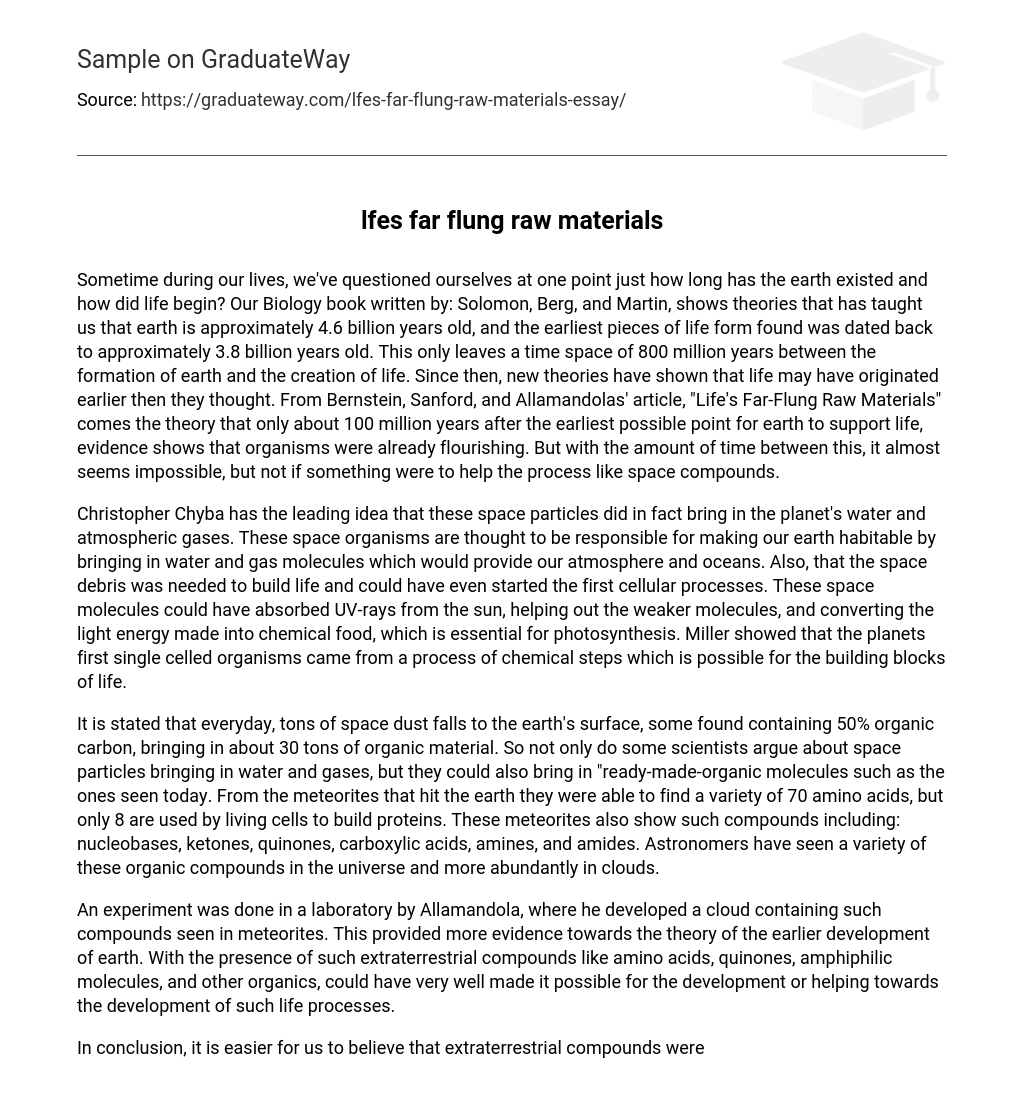Sometime during our lives, we’ve questioned ourselves at one point just how long has the earth existed and how did life begin? Our Biology book written by: Solomon, Berg, and Martin, shows theories that has taught us that earth is approximately 4.6 billion years old, and the earliest pieces of life form found was dated back to approximately 3.8 billion years old. This only leaves a time space of 800 million years between the formation of earth and the creation of life. Since then, new theories have shown that life may have originated earlier then they thought. From Bernstein, Sanford, and Allamandolas’ article, “Life’s Far-Flung Raw Materials” comes the theory that only about 100 million years after the earliest possible point for earth to support life, evidence shows that organisms were already flourishing. But with the amount of time between this, it almost seems impossible, but not if something were to help the process like space compounds.
Christopher Chyba has the leading idea that these space particles did in fact bring in the planet’s water and atmospheric gases. These space organisms are thought to be responsible for making our earth habitable by bringing in water and gas molecules which would provide our atmosphere and oceans. Also, that the space debris was needed to build life and could have even started the first cellular processes. These space molecules could have absorbed UV-rays from the sun, helping out the weaker molecules, and converting the light energy made into chemical food, which is essential for photosynthesis. Miller showed that the planets first single celled organisms came from a process of chemical steps which is possible for the building blocks of life.
It is stated that everyday, tons of space dust falls to the earth’s surface, some found containing 50% organic carbon, bringing in about 30 tons of organic material. So not only do some scientists argue about space particles bringing in water and gases, but they could also bring in “ready-made-organic molecules such as the ones seen today. From the meteorites that hit the earth they were able to find a variety of 70 amino acids, but only 8 are used by living cells to build proteins. These meteorites also show such compounds including: nucleobases, ketones, quinones, carboxylic acids, amines, and amides. Astronomers have seen a variety of these organic compounds in the universe and more abundantly in clouds.
An experiment was done in a laboratory by Allamandola, where he developed a cloud containing such compounds seen in meteorites. This provided more evidence towards the theory of the earlier development of earth. With the presence of such extraterrestrial compounds like amino acids, quinones, amphiphilic molecules, and other organics, could have very well made it possible for the development or helping towards the development of such life processes.
In conclusion, it is easier for us to believe that extraterrestrial compounds were present during the time of this evolution and that it inhibited the creation of such living organisms. But since this concept is relatively new there is not enough evidence to determine if such compounds had anything to do with the development. Why couldn’t one say that the scientists misinterpreted the development of earth and living organisms all together? This assumption could regenerate all new findings as to when and how the earth began.





